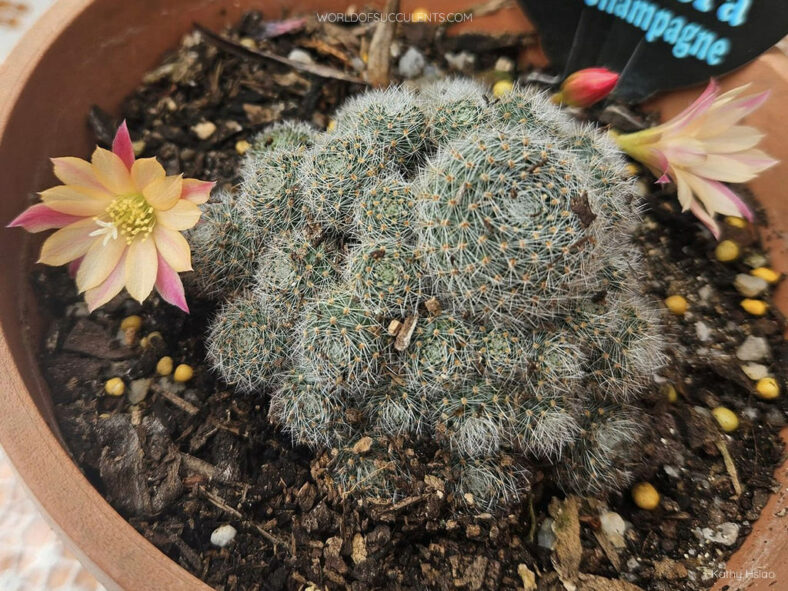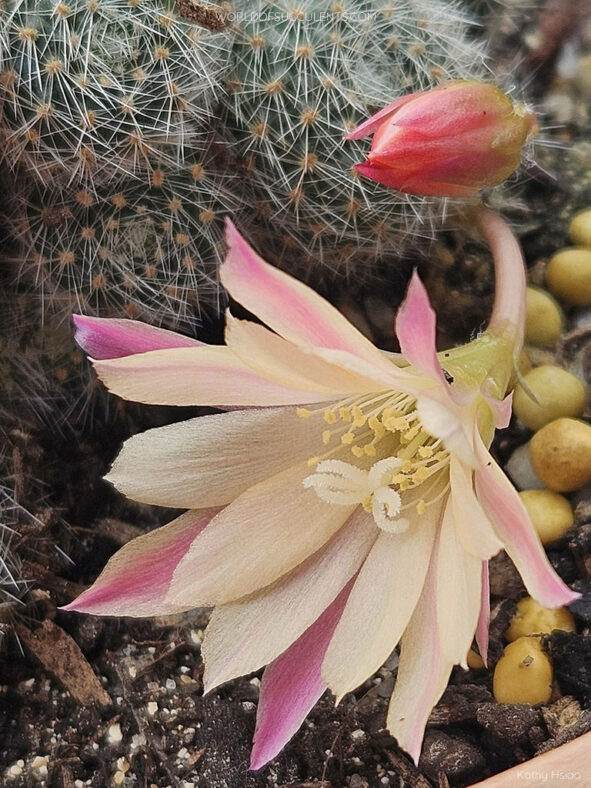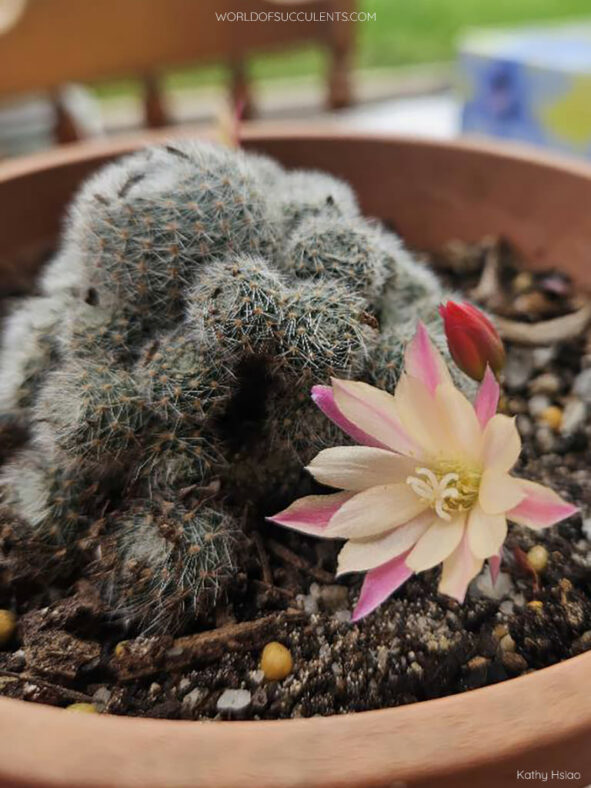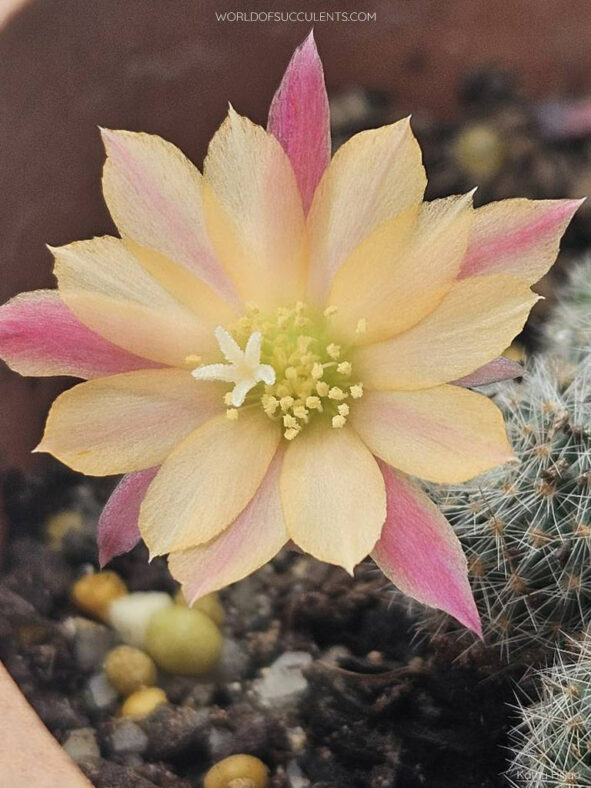John Pilbeam, who created Aylostera 'Pink Champagne', named it after the colors of its flowers, which reminded him of pink gin. However, he decided to give it a more elegant name, "Pink Champagne."
Scientific Name
Aylostera 'Pink Champagne'
Synonym(s)
Rebutia 'Pink Champagne'
Scientific Classification
Family: Cactaceae
Subfamily: Cactoideae
Tribe: Trichocereeae
Genus: Aylostera
Origin
Aylostera 'Pink Champagne' is a hybrid created by John Pilbeam (1931-1923) in Kent, England, United Kingdom. It results from a cross between Aylostera perplexa and Aylostera 'Sunrise'.
Description
Aylostera 'Pink Champagne', formerly known as Rebutia 'Pink Champagne', is a beautiful, small cactus with spherical to short-cylindrical stems covered by clusters of appressed, white spines. As it matures, the plant produces offsets at the base, forming a compact mound. The stems can grow up to 1.2 inches (3 cm) in diameter.
During the spring, Aylostera 'Pink Champagne' produces beautiful pastel pink flowers that often form a ring around the base of the stems. The flowers are funnel-shaped and can reach a diameter of 1.2 inches (3 cm).

How to Grow and Care for Aylostera 'Pink Champagne'
Light: While it grows well in direct sunlight, Aylostera 'Pink Champagne' prefers partial shade during midday in the summer. A sunny window would be ideal if you are growing the cactus indoors.
Soil: Good drainage is essential for a healthy plant. You can use a commercial soil mix made from cacti or make your own.
Temperature: As a mountain plant, this cactus does not appreciate high temperatures and grows best in USDA Plant Hardiness Zones 9b to 11b, with average minimum winter temperatures ranging from 25°F to 50°F (-3.9°C to 10°C).
Watering: During the growing season, water Aylostera 'Pink Champagne' frequently, but allow the soil to dry out completely before watering again. However, stop watering when it goes dormant in the winter.
Fertilizing: Although unnecessary, using a low-balanced soluble fertilizer diluted to half the recommended strength can help your cactus thrive. However, suspend the feeding in winter.
Repotting: It is recommended that the young plant be repotted each year in early spring. On the other hand, a mature plant only needs to be repotted when it outgrows its pot. Late winter or early spring is the best time for repotting.
Propagation: You can propagate Aylostera 'Pink Champagne' by offsets during the growing season.
See more at How to Grow and Care for Rebutia.
Toxicity of Aylostera 'Pink Champagne'
Aylostera 'Pink Champagne' has no toxic effects reported.
Links
- Back to genus Aylostera
- Succupedia: Browse succulents by Scientific Name, Common Name, Genus, Family, USDA Hardiness Zone, Origin, or cacti by Genus
Photo Gallery
Click on a photo to see a larger version.


